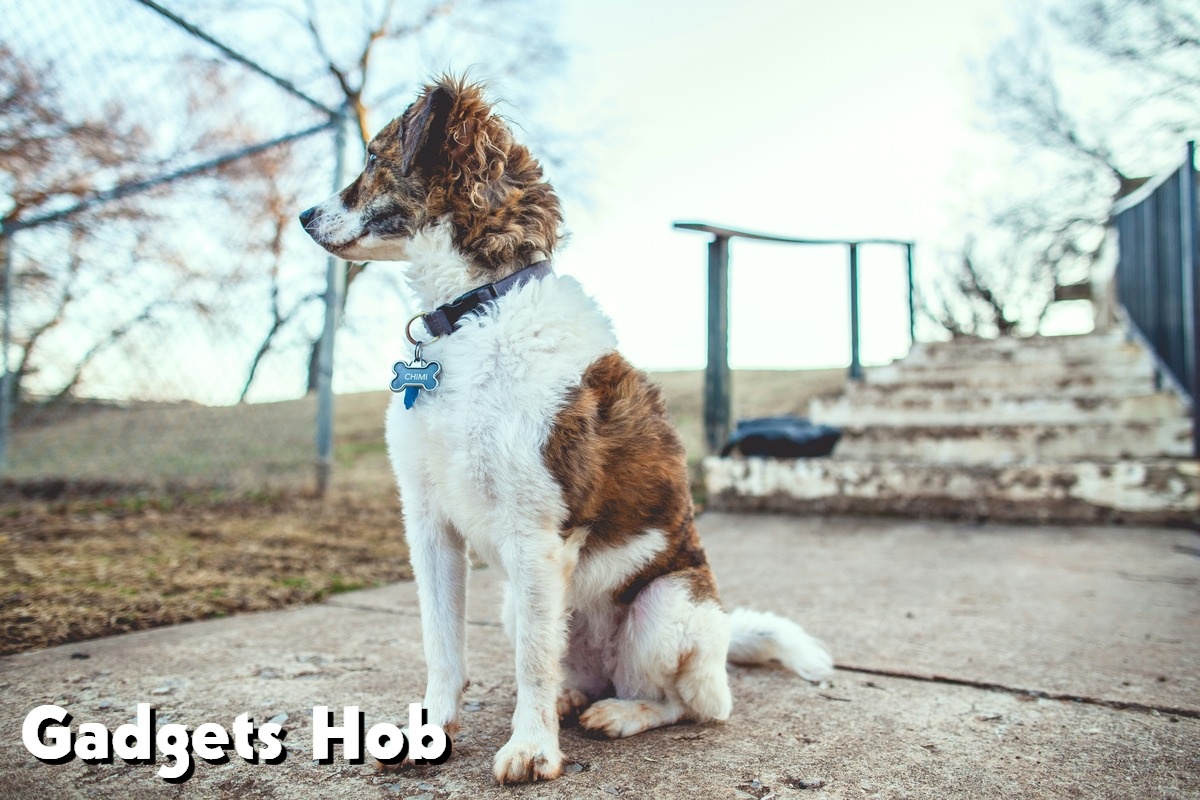A dog’s fence collar is a vital piece of equipment for keeping your pet within secure bounds. By combining these collars with wireless dog fences, a virtual perimeter can be established without the use of conventional obstacles. When a dog approaches the border, the collar and transmitter communicate to send out a warning signal, typically a vibration or sound. A mild correction is given to the dog to get them to come back if they keep going in the direction of the edge.
For dogs’ comfort and protection, selecting the appropriate fence collar is crucial. Because most collars are adjustable and include several levels of correction, you may customize them to fit your dog’s size and temperament. To prevent pain, it’s also critical to check the fit frequently to make sure it’s snug but not too tight. When used appropriately, a dog fence collar encourages responsible freedom, allowing your pet to travel freely while maintaining their safety.
The Operation of Fence Collars
GPS technology is used by wireless dog fence collars to establish an imperceptible barrier. The collar emits a warning signal, like a sound or vibration, when it senses that your dog is getting close to or going over this line. The collar may provide a gentle static reprimand to entice the dog to return to the safe area if the dog persists in going beyond the predetermined boundaries. Depending on the size and temperament of the dog, this procedure is safe and adaptable. No matter the terrain, the collar’s GPS system guarantees precise border maintenance. Wireless dog fences are a practical way to keep pets safe in yards of all sizes since they eliminate the need for physical barriers. Collars for wireless dog fences are particularly helpful for teaching dogs to recognize their limits without the use of conventional fencing. For pet owners who want to have control over their dog’s movements, these collars provide flexibility, use, and a secure option.
The Advantages of Fence Collars
When paired with wireless dog fences, fence collars have many benefits. The improved safety for pets is one important advantage. Dogs can freely roam within a set area without running the risk of straying into harmful areas thanks to the safe border created by fence collars. The simplicity of installation is an additional benefit. Wireless dog fences are a hassle-free solution for pet owners because they don’t require digging or substantial setup like traditional fences do. Additionally, fence collars encourage regular training. Over time, the collar’s innocuous signal when a dog near the border strengthens boundary awareness and increases obedience. Additionally, because fence collars may be tailored to different outside locations, they offer flexibility for households with big or irregularly shaped yards. For families who travel around a lot or like to take their pets outside, this portable solution is perfect. All things considered, fence collars are a useful instrument for guaranteeing the independence and safety of pets.
Fence Collar Types Available
Knowing the many kinds of fence collars that are available is crucial when selecting a wireless dog fence. The most popular kind is the GPS fence collar, which sets boundaries for your pet using satellite signals. Physical barriers are not necessary while using these collars, which offer flexible containment. The static correction collar is an additional choice that, when your dog violates the designated boundary, provides a gentle stimulus. Safe zones can be effectively reinforced with this kind of collar. Furthermore, tone and vibration collars provide a kinder method by using sounds or vibrations rather than static correction to communicate with your dog. Additionally popular are rechargeable fence collars, which provide long-term use and convenience without the inconvenience of frequent battery changes. Additionally, certain models have waterproof features, which makes They are appropriate for a range of weather conditions. To keep your dog secure and comfortable within the wireless dog fence system, take into account their needs and preferences while choosing a collar.
Selecting the Appropriate Dog Fence Collar
A number of variables should be taken into account while selecting the ideal fence collar for your dog. First, make sure the collar fits your dog’s size and is compatible with your wireless system. To prevent discomfort, a lightweight collar is best for tiny dogs. However, in order to withstand their strength, larger breeds could require a stronger collar.
Next, consider how adjustable the collar is. Effective boundary training requires a suitable fit, which is ensured by the collar’s easy adjustment feature. Your dog’s fence collar should also be comfy, using materials that won’t bother their skin or soft padding.
Another important consideration is battery life. A collar with a long battery life will guarantee constant protection and lessen the need for frequent recharging. Lastly, see if the collar is waterproof, which will make it more dependable in a variety of weather conditions, particularly if your dog likes going on outside adventures.
Setting up and installing fence collars
Wireless dog fence collar installation and setup is a simple procedure that guarantees your pet stays safe inside predetermined boundaries. To optimize the signal coverage, start by positioning the transmitter in the middle of your house or yard. Once in position, define the region you wish to let your dog explore by adjusting the transmitter’s range.
After charging the collar completely, make sure the contact points on the collar touch your dog’s skin and suit them comfortably. To avoid any pain, it’s critical to constantly check the fit. Holding the collar allows you to hear beeps or feel vibrations when your dog approaches the border, so you can walk them around it.
In order to finish the installation, teach your dog the boundaries gradually using positive reinforcement. For your dog’s safety, always keep an eye on the collar’s battery life and check the system from time to time.
Using a Fence Collar to Train Your Dog
For a wireless dog fence to be used safely and effectively, your dog must be trained to wear a fence collar. Let your dog wear the collar for brief periods of time without activating it to get them used to it. Make sure they comprehend the warning sign that signals their approach to the boundary as you gradually acquaint them with the boundary area. When your dog remains in the allotted space, reward them with praise and treats. The collar will gently correct your dog if they approach the boundary too closely. Regular training sessions and a steady increase in their independence within the boundaries are essential for maintaining consistency. Make sure the collar is connected to good memories for your dog. facilitating a seamless training experience. Since every dog learns differently, exercise patience. With the right training, your dog may safely enjoy the freedom of your yard and respect the boundaries.
Frequently Held Myths Regarding Fence Collars
Many pet owners have illusions about fence collars when it comes to wireless dog fences. There is a widespread misconception that these collars hurt or upset pets. Modern fence collars, on the other hand, are made with safety in mind and only provide gentle, innocuous corrections to help pets return to their proper borders. The idea that all dogs would quickly get used to wearing a fence collar is another myth. Some dogs pick things up fast, but others can need time and encouragement to realize their boundaries. Furthermore, some owners believe that fence collars are useless for training. In actuality, they can be a useful tool for maintaining pet safety and enforcing limits when used appropriately. Lastly, a lot of people think that only specific breeds can wear fence collars. However, they can be applied to people of different sizes and temperaments. Pet owners can make more educated decisions regarding the training and safety of their dogs by being aware of these common myths.
Frequently Held Myths Regarding Fence Collars
Many pet owners have illusions about fence collars when it comes to wireless dog fences. There is a widespread misconception that these collars hurt or upset pets. Modern fence collars, on the other hand, are made with safety in mind and only provide gentle, innocuous corrections to help pets return to their proper borders. The idea that all dogs would quickly get used to wearing a fence collar is another myth. Some dogs pick things up fast, but others can need time and encouragement to realize their boundaries. Furthermore, some owners believe that fence collars are useless for training. In actuality, they can be a useful tool for maintaining pet safety and enforcing limits when used appropriately. Lastly, a lot of people think that only specific breeds can wear fence collars. But they work for people of different sizes and temperaments. Knowing these myths can assist pet owners in making wise choices regarding the training and safety of their dog.
Upkeep and Handling of Fence Collars
Fence collars must be maintained and cared for in order to last a long time and function at their best. Check the collar frequently for wear indicators like frayed straps or broken parts, and replace them as necessary. The collar’s effectiveness may be impacted by dirt and debris, so keep it clean by wiping it down with a moist cloth. To avoid moisture damage, make sure the seals on waterproof versions are intact. To make sure the collar’s battery is operating properly, it’s crucial to test it frequently and replace it as the manufacturer advises. Additionally, keep the collar away from harsh chemicals and extremely high or low temperatures. which may cause degradation. When not in use, keep the collar somewhere dry and cool. Your dog will stay safe and secure in the assigned area if you adhere to these easy maintenance guidelines, which will also increase the fence collar’s longevity and dependability.
Conclusion: Making a Knowledgeable Choice
To protect your pet’s safety and wellbeing, it’s crucial to consider a number of considerations while thinking about a wireless dog fence. To choose the ideal fit, consider your dog’s temperament, the size of your yard, and the terrain. Examine various wireless dog fence models, paying particular attention to characteristics like installation simplicity, signal strength, and range. In order to assess performance and dependability, take into account user reviews and professional advice. You can make an informed choice that best suits your needs and gives your dog a safe environment by compiling all the information you need. Making a well-considered decision will bring you and your pet peace of mind.



